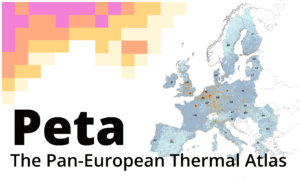 An EU-funded research project has launched a tool that allows European governments, businesses, consultants, academics, planners and energy enthusiasts to assess thermal resources and thermal demand in any given region.
An EU-funded research project has launched a tool that allows European governments, businesses, consultants, academics, planners and energy enthusiasts to assess thermal resources and thermal demand in any given region.
The Pan-European Thermal Atlas (Peta4), launched today in Brussels, is an interactive online map of the heating and cooling demand, efficiency and supply in Europe. Created by the Heat Roadmap Europe (HRE) project, it provides visual and technical data for heating and cooling projects, giving users an appropriate analysis tool and easier access to relevant data.
David Connolly, HRE project coordinator, said: “For years, power plants, industry, and waste incinerators all across Europe have been throwing away enormous quantities of heat and for the most part, this has gone unnoticed. Peta4 enables policymakers, planners, suppliers and researchers to identify hotspots so they can replace the energy created by fossil fuel boilers with this excess heat instead.”
Connolly added: “It’s amazing how much heat is being wasted in cities that currently spend millions on natural gas to heat their buildings. This tool will help save money, carbon emissions, and energy consumption. Cities can meet their EU energy targets while also cutting costs for consumers.”
 Peta4 covers the 14 EU member states that are part of the Heat Roadmap Europe project. Developed by project partners at Halmstad University, European University Flensburg, and Aalborg University, it creates maps with specific and realistic data on the location and scale of heat demand and excess heat, which will facilitate the development of energy system solutions across Europe.
Peta4 covers the 14 EU member states that are part of the Heat Roadmap Europe project. Developed by project partners at Halmstad University, European University Flensburg, and Aalborg University, it creates maps with specific and realistic data on the location and scale of heat demand and excess heat, which will facilitate the development of energy system solutions across Europe.
Users can search for a specific location, to analyse the feasibility of a project in an area and assess where, for example, district heating or heat pumps could be economically viable. Peta4 contains a 100 m resolution grid of the modelled heat demand in 2015, which visualises where district heating networks could be implemented. This is combined with a layer presenting the excess heat supply available from various large-scale plants and industries, to show how these new district heating networks could supply their heat demand.
The maps use openly accessible spatial geo-data from the European Commission, the European Environmental Agency and Eurostat. They are produced and funded under the framework of the European Union’s Horizon 2020 research and innovation programme.
Placing today’s launch in the wider energy policy context, Paul Voss, Managing Director of Euroheat & Power added: “If the STRATEGO project helped prove that district energy belongs on the energy transition bus, I fully expect that its successor, Heat Roadmap Europe 4 will demonstrate that it deserves a great seat! This slightly tortured metaphor aside, I’m excited about the ground-breaking work in the field of sustainable heating and cooling that will be done as a result of this initiative and grateful to the European Commission for helping to make it possible.”
Access the Peta4 maps
Notes to editor:
Pan-European Thermal Atlas Logo © Aalborg University
Screenshot of Pan-European Thermal Atlas © Aalborg University
About Heat Roadmap Europe
The Heat Roadmap Europe 4 project is mapping and modelling the heating and energy systems of the 14 largest users of heat in the EU, to develop new policies at local, national, and EU level to ensure the uptake of efficient, sustainable and affordable heating and cooling solutions. More information on the project and consortium partners at: www.heatroadmap.eu
About Horizon 2020
 This project has received funding from the European Union’s Horizon 2020 research and innovation programme under grant agreement no 695989. The sole responsibility for the content of this document lies with the author and in no way reflects the views of the European Commission.
This project has received funding from the European Union’s Horizon 2020 research and innovation programme under grant agreement no 695989. The sole responsibility for the content of this document lies with the author and in no way reflects the views of the European Commission.
Horizon 2020 is the biggest EU Research and Innovation programme ever with nearly €80 billion of funding available over 7 years (2014 to 2020) – in addition to the private investment that this money will attract. It promises more breakthroughs, discoveries and world-firsts by taking great ideas from the lab to the market.
For reference visit: http://ec.europa.eu/programmes/horizon2020/en/what-horizon-2020